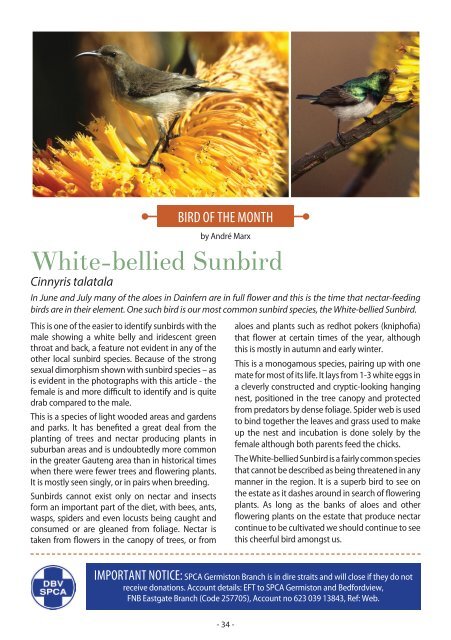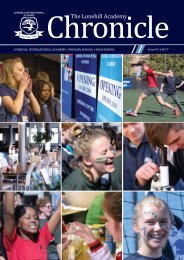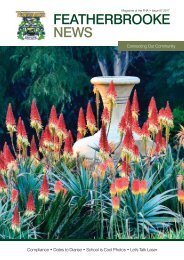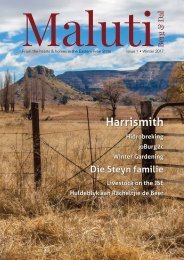Glen Publisher_Dainfern In Focus_Issue 0717
Create successful ePaper yourself
Turn your PDF publications into a flip-book with our unique Google optimized e-Paper software.
BIRD OF THE MONTH<br />
by André Marx<br />
White-bellied Sunbird<br />
Cinnyris talatala<br />
<strong>In</strong> June and July many of the aloes in <strong>Dainfern</strong> are in full flower and this is the time that nectar-feeding<br />
birds are in their element. One such bird is our most common sunbird species, the White-bellied Sunbird.<br />
This is one of the easier to identify sunbirds with the<br />
male showing a white belly and iridescent green<br />
throat and back, a feature not evident in any of the<br />
other local sunbird species. Because of the strong<br />
sexual dimorphism shown with sunbird species – as<br />
is evident in the photographs with this article - the<br />
female is and more difficult to identify and is quite<br />
drab compared to the male.<br />
This is a species of light wooded areas and gardens<br />
and parks. It has benefited a great deal from the<br />
planting of trees and nectar producing plants in<br />
suburban areas and is undoubtedly more common<br />
in the greater Gauteng area than in historical times<br />
when there were fewer trees and flowering plants.<br />
It is mostly seen singly, or in pairs when breeding.<br />
Sunbirds cannot exist only on nectar and insects<br />
form an important part of the diet, with bees, ants,<br />
wasps, spiders and even locusts being caught and<br />
consumed or are gleaned from foliage. Nectar is<br />
taken from flowers in the canopy of trees, or from<br />
aloes and plants such as redhot pokers (kniphofia)<br />
that flower at certain times of the year, although<br />
this is mostly in autumn and early winter.<br />
This is a monogamous species, pairing up with one<br />
mate for most of its life. It lays from 1-3 white eggs in<br />
a cleverly constructed and cryptic-looking hanging<br />
nest, positioned in the tree canopy and protected<br />
from predators by dense foliage. Spider web is used<br />
to bind together the leaves and grass used to make<br />
up the nest and incubation is done solely by the<br />
female although both parents feed the chicks.<br />
The White-bellied Sunbird is a fairly common species<br />
that cannot be described as being threatened in any<br />
manner in the region. It is a superb bird to see on<br />
the estate as it dashes around in search of flowering<br />
plants. As long as the banks of aloes and other<br />
flowering plants on the estate that produce nectar<br />
continue to be cultivated we should continue to see<br />
this cheerful bird amongst us.<br />
IMPORTANT NOTICE: SPCA Germiston Branch is in dire straits and will close if they do not<br />
receive donations. Account details: EFT to SPCA Germiston and Bedfordview,<br />
FNB Eastgate Branch (Code 257705), Account no 623 039 13843, Ref: Web.<br />
- 34 -





